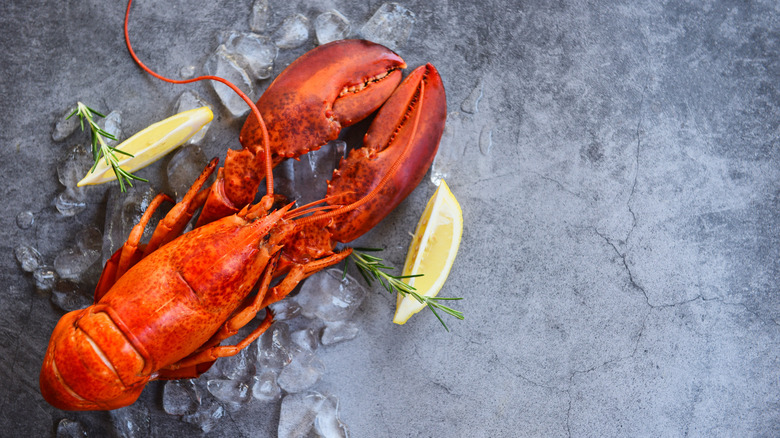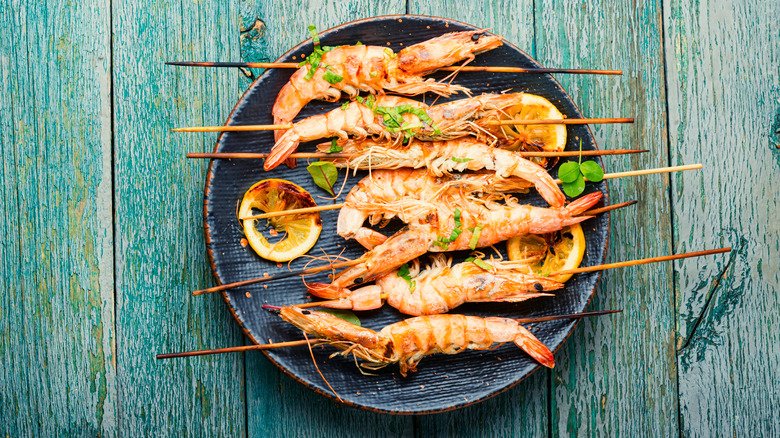What You Should Know Before Ordering Dishes With Lobster
Have you ever been excited to see lobster on a fast-food menu only to stop and think: "Why is this place selling lobster?" or "How can they sell that so cheap?" While chain restaurant lobster bites might still in fact be a delicious seafood treat, they likely aren't made with the conventional "lobster" you may be picturing. So, if it's isn't lobster, what's in those cheap, quick-service lobster dishes?
More often than not, the dish is made with langostinos. While Seafood Source notes that langostinos are technically a species of lobster, they are more closely related to certain types of crabs than to the large crustaceans served up with drawn butter on a surf and turf plate. ABC News reports langostinos come from Chile and "look like small, stubby lobsters." While Seafood Source notes the tail meat from langostinos tastes very similar to meat from true lobster tail — as in the large Maine lobsters and Spiny lobsters most people picture when they think of the seafood delicacy — it comes in much smaller portions and has a tougher texture more akin to shrimp.
Over the years, seafood restaurants like Red Lobster and Long John Silvers have drawn criticism for marketing langostino as lobster in appetizers and snacks, since the FDA specifies menus must read "langostino or langostino lobster" to avoid consumer confusion.
Langostino versus Langoustine
While there may be rules in place to help avoid confusion, that does not always keep things clear, especially since there is a third lobster-esque crustacean on the market that can easily confuse consumers, which, despite its name, is neither a true lobster or a langostino.
Langoustines, which Nature Word notes are also known as Norway lobster, Dublin bay prawns, or scampi, is yet another species of lobster fished from cold waters off Norway, Iceland, Scotland, as well as in New Zealand. While more closely related to Maine and Spiny lobsters, Nature World says langoustines are smaller like langostinos but resemble large shrimp. Unlike langostinos, however, langoustines are not a cost-effective alternative to lobster.
While they all taste similar, Bon Appetit notes that some luxury chefs consider langoustines even more delicate and tasty than Maine lobster, and because the meat is so delicate, the shellfish must be shipped live and carefully packaged in order to maintain quality. Due to the logistics of buying them, langoustines are even more expensive than lobster, so be prepared to pay a premium for something smaller than a lobster tail if you do spot "Norway lobster" on a menu — it will probably somewhere other than Long John Silvers or Red Lobster, though.

